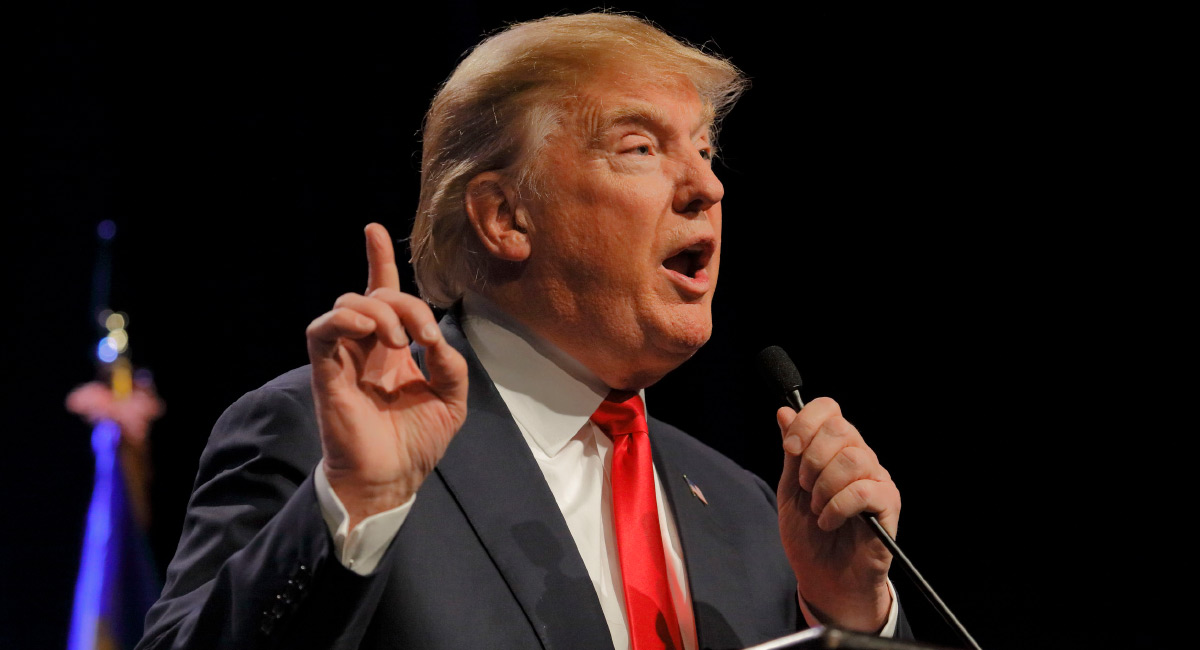Americans are understandably war-weary and President Donald Trump campaigned on a promise of disengagement from the endless wars in the Mideast. However, in a dramatic and unnecessary escalation of violence after a minor attack by an Iranian-sponsored militia on an Iraqi military base, Trump’s assassination of Qassem Soleimani, Iran’s top general and second most powerful leader, has unconstitutionally initiated what could become a war with that nation in which he is unlikely to prevail. Despite the disparity in conventional indices of national power between the United States and Iran that gives Trump his swagger, that disparity will now do him little good in the asymmetric war that Iran will likely wage. In war, the enemy too has a vote.
It is clear from the debates of the American Founding Fathers at the Constitutional Convention in 1787 that, to avoid the executive tyranny that they had experienced under King George III, they gave the power to initiate war to the people’s representatives in Congress, except under the extreme case of the territory of the country being directly attacked (thus making the convening of Congress impossible).
Iran has promised harsh retaliation for the assassination, which in turn prompted Trump to threaten to bomb Iranian cultural sites—meaningless strategically but a clear war crime under international law. (He backed off that threat Tuesday, but who knows.) Perhaps the president is blustering in what he believes is a negotiating tactic that will drive the Iranians to renegotiate the now defunct Iran nuclear agreement—as he did by recklessly threatening to use nuclear weapons against North Korea by using the loaded term “fire and fury.” The difference is that Trump only threatened the North Koreans into negotiations that went nowhere, whereas with Iran, he already has fired the first shot in an offensive hot war directed at Iran.
And Iran, always wily and calculating, will likely get the best of Trump in an asymmetric war fought on its own terms. The U.S. military is the best in world history absolutely and relative to other armed forces of its age. But its forte is conventional warfare against great powers. It has proven itself much less effective in dealing with asymmetric brushfire wars against weaker adversaries—in places like Vietnam and Afghanistan and Iraq after the initial more conventional combat had seemingly ended in victory. Of course, all these debacles have amply taught potential enemies how to fight the United States successfully if war breaks out. Asymmetric warfare merely means the weaker party using hit-and-run tactics, whether it be bombings, assassinations or cyber warfare against the targets worldwide of the stronger party. And the United States has many embassies, military bases, businesses, and other facilities both abroad and at home that Iran could target.
Historical examples of what a war with Iran could look like are the massive Hezbollah bombing of the U.S. Marine barracks in Beirut, Lebanon in 1983, which successfully drove the Reagan administration out of its military intervention in that country, and Libyan leader Moammar Gadhafi’s overseas terror campaign against U.S. targets after President Ronald Reagan picked a fight with him in 1981.
In the first instance, Hezbollah, a powerful and effective Iranian-backed Lebanese militia, first made its reputation by the barracks bombing that drove Reagan out of Lebanon. Hezbollah’s success inspired Osama bin Laden to try to use similar hit-and-run attacks on U.S. overseas and domestic targets with the more ambitious goal of driving the U.S. superpower out of Saudi Arabia and the Middle East.
As for the second example, shortly after taking office in 1981, Reagan initiated conventional military raids against Libya because he felt Gadhafi was a stooge of the rival Soviet superpower. Although the conventional wisdom is that such raids put Gadhafi “back in his box,” the actual historical record shows the opposite. Gadhafi launched a secret campaign of “terror” strikes and bombings against U.S. targets, including the famous La Belle disco bombing in Germany, which killed U.S. military service people.
In response to the assassination of Soleimani Iran could launch a similar worldwide campaign against a rich U.S. target list, perhaps including Hezbollah attacks within the United States. Although the weaker party, Iran can choose when and where to conduct such hit-and-run strikes with well-trained attackers.
Trump often steps on press coverage of his own accomplishments with outlandish actions and tweets in the United States, but with his assassination of Soleimani, he has similarly severely undermined his maximum pressure campaign of grinding economic sanctions against Iran after he withdrew from the Iran nuclear deal—which is what originally turned improving relations with Iran into the current plummeting descent into war. The economic pain inflicted by the maximum pressure campaign may have been a factor in the recent large protests against the Iranian regime, but the killing of a national hero has reversed this into a rally-around-the-flag effect, with massive protests now in favor of that same regime!
If the United States hadn’t wanted Iran to increase its power in the Middle East, it should have refrained in 2003 from invading an already weakened Iraq (as a result of the first U.S. war with that nation in 1991), thereby eliminating the main counterweight to increasing Iranian influence in the region. Although Trump claims to have been against Bush’s invasion of Iraq and U.S. troops remaining in the Middle East, if he had withdrawn all that remained in Iraq, these forces would not have been attacked by a pro-Iranian militia—and no such rash escalation could have occurred. Instead of withdrawing from a nonstrategic region before all this unpleasantness arose—and now much more is likely to come—the United States has piled one bad interventionist policy on top of another.

















